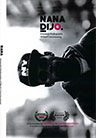
Nana Dijo: Irresolute Radiography of Black Consciousness 2015
Distributed by Third World Newsreel, 545 Eighth Avenue, Suite 550, New York, NY 10018; 212-947-9277
Directed by Bocafloja and Cambowashere
DVD, color and b&w, 40 min., In English and Spanish with subtitles in English and Spanish
Middle School - General Adult
Blacks, Latin Americans, Racism
Date Entered: 05/16/2017
Reviewed by Monique Threatt, Indiana University, Herman B Wells Library, Bloomington, INNana Dijo is a documentary-short that exposes xenophobic attitudes towards people of African descent in Mexico, Honduras, Uruguay, Argentina, and the United States. In the opening sequence, a child bikes down a straight and constructed dirt path. The camera then slowly pans to a massive and untamed forest. This opening scene represents the co-existence of a nation’s willingness to appreciate and preserve its organic cultural environment, along with the modern necessities to move forward. I like to think that this scene also represents the co-existence of people within a space without one culture destroying the other.
Intertwined with a jazz-infused and hip-hop soundtrack, over thirty narratives give voice to many issues facing Afro-Latino communities. This includes what it means to be bi or multicultural, a fear of not being embraced by either the African or Spanish community, a denial of one’s African ancestry, the media’s portrayal of people of color, colonized racism, and current geo-political race relations. An Afro-Mestizo woman observes that racism in the United States is overt, whereas, within certain Latino communities, racism can be subtle and masked within stereotypes based on hair texture, skin tone, or one being identified as acting too “Black” or too “Spanish.”
Although people of color face daily obstacles, the film also highlights the positive influence and impact of African art, culture, music, and religion within indigenous societies. Of particular note is the African’s participation in the revolution and freedom of Mexico. People of color actively seek to keep their ancestral history alive through awareness, education, and annual festivals.
I highly recommend this film for both public and academic libraries because it sheds light on systematic racism embedded within the black and brown communities not only here in the United States, but also in South and Central American countries. It is a subject not often discussed in current dialogue, nor in historical texts, but is worthy of further exploration and solutions.